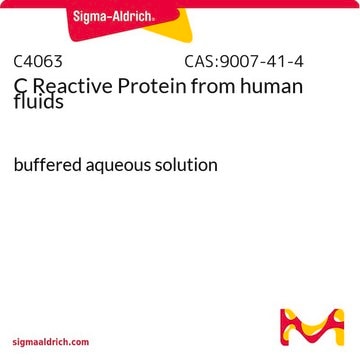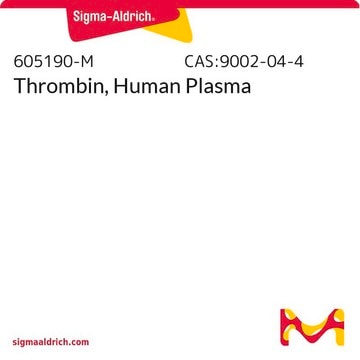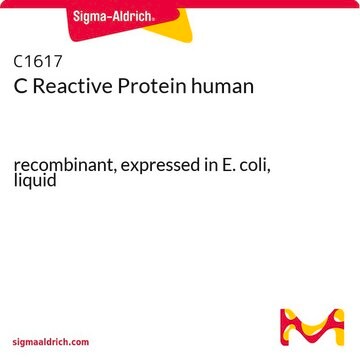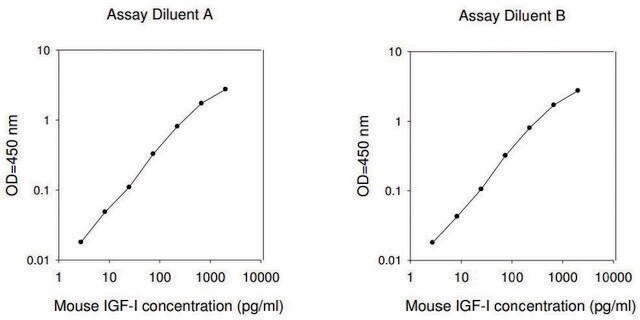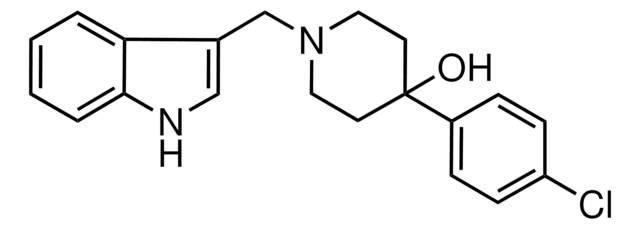P2200
Protein C from human plasma
Activated, lyophilized powder, ≥90% (SDS-PAGE)
Sinónimos:
Activated Protein C
Seleccione un Tamaño
Seleccione un Tamaño
About This Item
Productos recomendados
origen biológico
human plasma
Nivel de calidad
Ensayo
≥90% (SDS-PAGE)
Formulario
lyophilized powder
mol peso
heavy chain 41 kDa
light chain 21 kDa
técnicas
inhibition assay: suitable
solubilidad
H2O: 1 mg/mL
Nº de acceso UniProt
temp. de almacenamiento
−20°C
Información sobre el gen
human ... PROC(5624)
Descripción general
Aplicación
Acciones bioquímicas o fisiológicas
Forma física
Cláusula de descargo de responsabilidad
Código de clase de almacenamiento
11 - Combustible Solids
Clase de riesgo para el agua (WGK)
WGK 3
Punto de inflamabilidad (°F)
Not applicable
Punto de inflamabilidad (°C)
Not applicable
Elija entre una de las versiones más recientes:
Certificados de análisis (COA)
¿No ve la versión correcta?
Si necesita una versión concreta, puede buscar un certificado específico por el número de lote.
¿Ya tiene este producto?
Encuentre la documentación para los productos que ha comprado recientemente en la Biblioteca de documentos.
Los clientes también vieron
Active Filters
Nuestro equipo de científicos tiene experiencia en todas las áreas de investigación: Ciencias de la vida, Ciencia de los materiales, Síntesis química, Cromatografía, Analítica y muchas otras.
Póngase en contacto con el Servicio técnico

